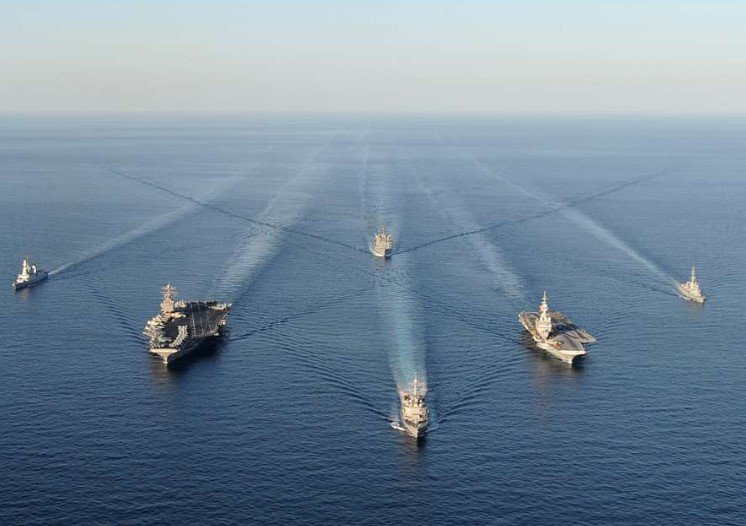Pentagon’s Build-Up Signals Dangerous Escalation While Trump’s Threats Stoke Global Alarm
The United States is moving closer to launching direct military strikes on Iranian territory, signaling a sharp and potentially explosive turn in Middle East geopolitics. Sources close to Pentagon planning say the White House has already laid the groundwork. Now, it may just be a matter of time.
Behind the headlines and military jargon lies a dangerous dance—one that’s no longer theoretical. War is on the table. And Washington is sharpening its knives.
Troops, Warships, and Jet Engines: America’s Message Is Loud and Clear
Fighter jets are roaring into forward bases. Bombers sit ready on tarmacs, armed and fueled. Naval strike groups have shifted position in the Persian Gulf. And across Jordan, Iraq, and Saudi Arabia, temporary logistics hubs are popping up in the shadows.
The scale of this mobilization isn’t routine. It’s prelude.
Two Pentagon officials, speaking anonymously due to security restrictions, confirmed that assets were being moved into place not for deterrence—but for capability. Translation? If the order comes, they can strike quickly.
“It’s not about if anymore. It’s about when,” one said bluntly.
This week, the U.S. military also reactivated select cyberwarfare units previously focused on Eastern Europe, suggesting digital strikes might accompany any air campaign.
The intent is unmistakable—even if officials refuse to confirm it outright.

Trump Turns Up the Heat, Personally Targets Tehran’s Leadership
Donald Trump isn’t hiding behind diplomacy anymore.
In one of his most incendiary X posts (formerly Twitter), the president declared Iran’s leadership would “pay a price history will never forget” if nuclear activities continue. He’s made no effort to disguise his personal anger, even hinting that U.S. intelligence knows the exact location of Iran’s Supreme Leader.
That kind of rhetoric has real consequences.
Trump’s recent demand for Iran’s “unconditional surrender” has shocked diplomats in Europe and unnerved Arab allies alike. French President Emmanuel Macron warned the U.S. to “not light a match on a dry field.” Germany’s Foreign Ministry echoed similar concerns, calling the situation “volatile beyond precedent.”
Even insiders are rattled. A former National Security Council official described Trump’s tone as “reckless to the point of incendiary.”
But for Trump’s base, it’s a rallying cry. For Iranian hardliners, it’s a gift.
The Bigger Picture: Protecting Israel, Projecting Power, or Both?
To critics, the motivations aren’t just about Iran’s nuclear program. They’re about dominance.
Anti-imperialist analysts argue this build-up has little to do with security or stability. Instead, they see a familiar pattern: oil, shipping lanes, regional control—and a long-standing commitment to defending Israel at all costs.
Washington’s war chest, they say, isn’t just defending freedom. It’s guarding influence.
Here’s how regional priorities break down:
| Strategic Objective | U.S. Position | Critics Say |
|---|---|---|
| Nuclear Deterrence | Prevent Iran from acquiring a nuclear weapon | Exaggerated threat to justify action |
| Israel’s Defense | Strongest ally in the region | Used as justification for intervention |
| Oil and Shipping Routes | Keep Strait of Hormuz open | Root cause of persistent U.S. meddling |
| Regional Hegemony | Maintain U.S. supremacy in Gulf | Empire-building under new name |
Even Saudi Arabia and the UAE—no strangers to confrontation with Iran—have quietly urged restraint.
One Saudi official told Asharq Al-Awsat, “If war comes, we all lose.”
What Iran Might Do Next—And Why Everyone’s on Edge
Tehran, for its part, hasn’t sat idle. Iran’s Revolutionary Guard Corps has placed ballistic missile units on high alert. Its regional proxies—from Hezbollah in Lebanon to the Houthis in Yemen—are also watching and waiting.
But that’s not all.
Iran has reportedly begun relocating elements of its nuclear program further underground. It has pulled out of backchannel talks with European mediators. It’s also activated cyber units known for targeting Gulf and Israeli infrastructure.
One Iranian commander was quoted in Tasnim News Agency as saying: “We are not seeking war. But if war seeks us, it will be answered tenfold.”
And that’s the nightmare scenario. A regional wildfire, ignited by a single match.
Allies Are Divided, Markets Are Spooked, Civilians Are Terrified
It’s not just diplomats who are sweating.
Markets dipped across Asia and Europe as war chatter grew louder. Brent crude surged above $95 a barrel for the first time since early 2023. Investors are nervous, and frankly, so are civilians.
In Bahrain, schools near U.S. military installations have been placed on heightened alert. In Dubai, there’s been a noticeable uptick in private jet traffic—wealthy residents quietly relocating to Europe. Meanwhile, Jordan and Iraq are reportedly working with the U.N. to prepare refugee contingency plans.
And everyday people? They’re stuck watching the skies.
Could the Region Stop the Slide Toward War?
Some still hold out hope that Arab states—Saudi Arabia, Qatar, the UAE, Oman—could intervene diplomatically before missiles fly.
There’s historical precedent. After all, it was Riyadh and Abu Dhabi that helped stabilize tensions after the 2019 Aramco attacks. Qatar hosted secret talks during the final phase of the Afghanistan war. And Oman has long served as a discreet go-between.
But this time feels different. Time is tight. The stakes are immense. And Washington seems disinterested in waiting.
Still, a few leaders are trying:
-
Turkish President Recep Tayyip Erdoğan has reportedly offered to host emergency de-escalation talks.
-
Qatar’s foreign minister flew to Tehran for a closed-door meeting that lasted nearly five hours.
-
Oman’s Sultan Haitham has been speaking directly with European officials, urging an urgent peace summit.
It may not be enough. But for millions living under these skies, even the smallest thread of diplomacy matters.
